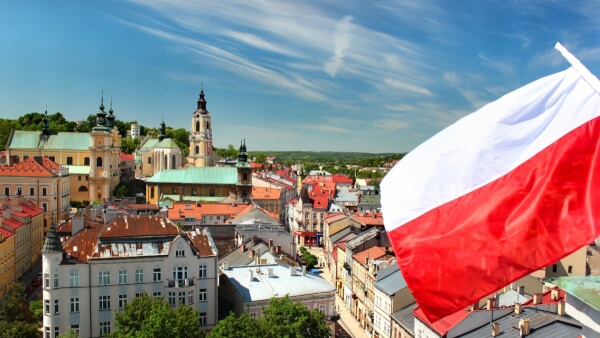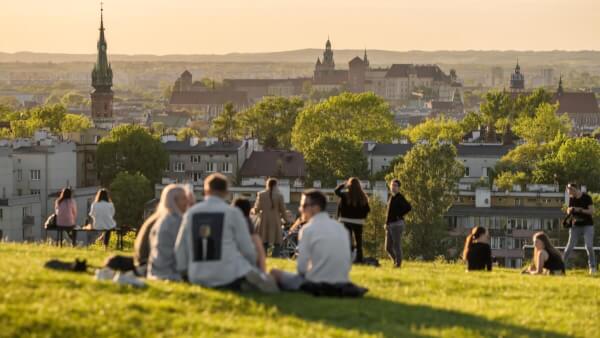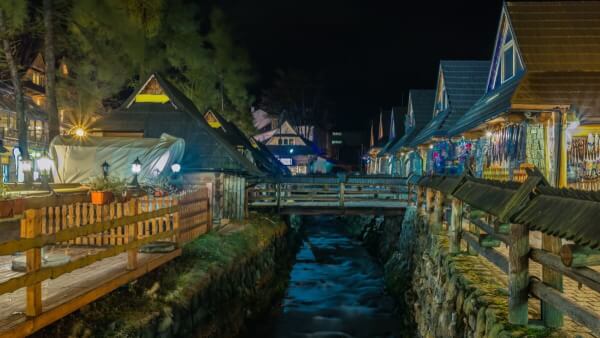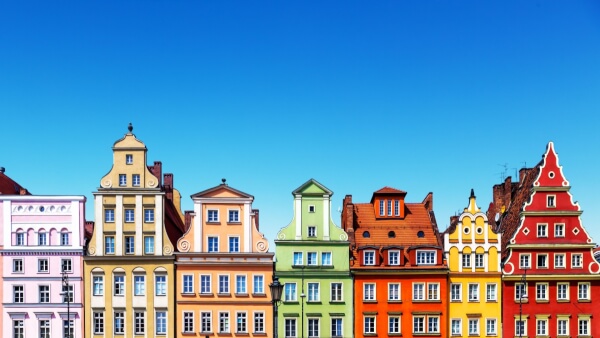Inheritance tax in Poland: What you need to know
Discover everything you need to know about inheritance tax in Poland. Our comprehensive guide covers the rates, who pays, how to calculate, and much more.

Whether you’re a Brit, Australian, or an American, Poland might not be the first retirement destination that comes to mind. But the eastern European country can be the ideal spot for retirees on a pension. Though more affordable than other Western nations, it still offers the same type of European charm for seniors: dense cities with Old World architecture (including castles!), quiet, idyllic villages, modern public transit and services, delicious food, and rich culture. Sitting at the crossroads of Western Europe and the Russian East, Poland has a uniquely blended culture for adventurous seniors to enjoy.
Poland has long been wedged between powerful empires and has had to strive to preserve its vibrant national culture. This has given the perennial Eastern European underdog an open, tolerant way of life, especially in the cities. No matter, where they’re from, expats should be confident that they’ll be warmly welcomed and accepted as they settle in.
Though a member state of the EU, Poland uses its own currency, the Polish złoty, instead of the Euro. As of mid-year 2017, the złoty trades for around the following values:
To get a sense of the cost of living in different areas of Poland, the following table lists the prices for several common good and services in Euros for Warsaw, the largest and most expensive city in the country, the mid-sized, multicultural city of Lublin, and the small town of Augustow.
| Warsaw | Lublin | Augustow | |
|---|---|---|---|
| Rent (one-bedroom apartment in city center) | €527 | €459 | €235 |
| Rent (three-bedroom apartment in city center) | €903 | €732 | €586 |
| Utilities (for 915 sq ft apartment) | €146. | €145 | €82 |
| Price per square meter (apartment in city center) | €229 | €155 | €87 |
| Internet | €10 | €10.00 | €11 |
| Milk | €2.27 | €2.20 | €1.77 |
| Meal for two (mid-range restaurant) | €23.50 | €23 | €20 |
| Gas (one liter) | €4.00. | €4.04 | €4.26 |
| Bottle of wine (mid-range) | €6.00 | €5.15 | €8.20 |
| Car (Toyota Corolla) | €17,400. | €17,900 | n/a |
| One-way ticket (city transit) | €1.00 | €0.70 | €0.47 |
| One pair of jeans (mid-range) | €61 | €60 | €77 |
Source: Numbeo.com
If you need to transfer money to Poland or even back home, you’ll want to be aware of the fees and exchange rates charged by different financial institutions. Most banks and transfer services charge low up-front fees, but take advantage of you by using a higher exchange rate and skimming the difference.
To transfer money and have the largest amount left over when you collect it, give Wise a try. That way, your money will be converted at the real exchange rate - the same one you’ll find on Google - and that should allow you to save more of your hard earned money.
While it’s always possible to buy a small, cheap farmhouse in the country, Poland is cheap enough that you may be able to buy an apartment in big cities like Warsaw or Krakow. It’s possible to purchase apartments there for €85,000-€250,000 ($100,000-$290,000). You won’t find that in many European capitals, where owning property is out of reach for those who aren’t wealthy.
With such a budget-friendly standard of living, you can live cheaply in Poland with around $100,000 saved. If you’re able to draw a modest salary, you can afford to rent, or possibly buy, a stylish apartment in a nice neighborhood in a large Polish city. If you have the money to retire comfortably, you could afford a sizable house, and possibly even a few acres of land, in the Polish countryside, with enough left over for jaunts to the Masurian lakes or Tatra mountains.
The threshold for legal residency in Poland is lower than in other European countries. To become a legal resident of Poland, you need to contact the Polish consulate in your home country and apply for a National Long-Stay Visa. In order to be granted a visa, you only need to a passport, proof of health insurance, a document explaining the purpose of your move, and proof that you have sufficient financial resources to support yourself (pension, social security, 401(k), or real estate of stock investments).
Geographically, Poland is largely a broad plain dotted with farms, but there are many scenic pockets through the country that would be perfect to settle in.
The Masurian Lakes Region, which consists of over 2,000 lakes spread across northeastern Poland, is one of the most popular tourist destination in the country. An extensive series of rivers and canals connect the lakes, so boaters can travel easily from one to the next. If you’re a fan of watersports, fishing, sailing, or just a nature-lover in general, this might be the region for you. You could use the nearby, mid-sized city of Olsztyn as your home base, which consistently ranks highly in quality of life, health care, affordability, and safety, and is considered one of the happiest cities in the country.
If living near water is important to you, consider the northern city of Gdansk, on the Baltic sea. As one of the most active port cities in the Baltic, Gdansk has long had a reputation for multiculturalism and tolerance. It also is considered to have some of the most beautiful architecture in the country. There, you’d be close to several white sand beaches, and can spend your weekends sailing and fishing in the pristine waters of Gdansk bay.
If hiking, skiing, and rocky vistas are more your thing, look into the Tatras mountains region in the southern country, near the border with Slovakia. The resort town of Zakopane, known for its thriving art scene and adorable wooden chalets, would be an ideal place for a retiree eager to hit the trails - or slopes.
If you can’t choose between the mountains, the coast, or the plains and want a good mix of different qualities, there’s always the bustling capital, and largest city, of Warsaw. The city of two million lies in the heart of the country, a short train ride from the mountains in the south or the Baltic sea in the north. The historic center of the town is actually a UNESCO World Heritage Site.
If you’re split between the city and the country, Lodz, the third-largest city in the country, might also be a good fit for you, since it’s Lagiewnicki forest, north of downtown, is the largest urban park in Europe.
While Warsaw is a great business center with red-hot job market, it’s also hectic and has the most expensive housing in the country. For a retiree who wants a slower pace of life, but also wants to live in a city, the country’s second city of Krakow might be a better fit. The old capital of Poland was one of the few cities in Europe that wasn’t mostly destroyed in World War II. Because of that it has well-preserved historical architecture, including a market square that’s considered one of the best in the world, as well as many other historic attractions and museums. It’s a compact, walkable, safe city, and the narrow medieval streets of Old Town Krakow are also full of great bars, restaurants, art galleries, and shops.
Poland has a national health service that offers free medical care and hospital stays to all of its citizens. Private insurance plans are also available and a higher percentage of Polish citizens have them compared to other European countries. They often use it to supplement the public system, which can be known for long waits and frustrating bureaucracy.
If you have migrated from an EEA country, or the US or Australia, you can choose to join the national health fund, which will grant you emergency and maternity care, as well as cover any pre-existing conditions.
Even if all of your income comes from abroad, you'll still need to file an annual tax return with Poland if you live there more than six months out of the year. When they file their taxes, expats may be required to complete additional filings and be subject to specific reporting requirements. Taxation regulations vary between countries, so consult an accountant for advice on how to remain tax compliant back home and in your new country.
Poland has a temperate continental climate, with cold winters and warm, sunny, rainy summers. That means that though it’s situated at Russia’s doorstep, it’s climate and vegetation are similar to that of Western European nations. The average high in Warsaw is 25℃ (77℉) during the summer and 0℃ (32℉) during the winter. Temperatures can stay well below freezing during winter, and heavy snowstorms are common.
As for getting around the country, Poland has a robust public transit system comprised of buses, trams, and trolleybuses, as well as trains that connect numerous cities. Warsaw also has an extensive subway system.
If you’re looking to dive into local customs, check out the marzanna. Named after the pagan Slavic goddess of death, winter, and nature, this annual, countrywide tradition involves building a large effigy on the first day of spring, setting it on fire, and then chucking it into a river. This ritual is meant to banish winter and encourage new crops to grow.
Also, word to the wise, if you walk through town on the Monday after Easter, wear a raincoat. That day is the celebration of Śmigus-dyngus, which is basically massive, town-wide, all day water fight. It’s a free-for-all where combatants use water pistols, bottles, and water balloons to soak anyone they come across, even unsuspecting strangers.
Poles have a reputation for being easy-going, living life at a slower pace, and being strongly connected to nature. Gardening is a popular pastime, and many homes have a “garden house” even in the cities
Poland isn't as English-friendly as some Western European nations, so it would be wise to learn some Polish before you arrive. Once you’ve mastered a few key phrases, you’ll find the Polish people generally friendly and open. The Polish love to eat and drink, so as you start making friends expect to be invited to a dinner party and offered plenty of pierogi, kielbasa, and Polish vodka.
Poland is an overlooked gem where you can find much of what people love about European culture - architecture, natural beauty, museums, food, drink, and festivals - without the sticker shock of a Paris or Oslo. With a variety of geographical regions and cities, you can build a retirement that suits your needs and dreams.
*Please see terms of use and product availability for your region or visit Wise fees and pricing for the most up to date pricing and fee information.
This publication is provided for general information purposes and does not constitute legal, tax or other professional advice from Wise Payments Limited or its subsidiaries and its affiliates, and it is not intended as a substitute for obtaining advice from a financial advisor or any other professional.
We make no representations, warranties or guarantees, whether expressed or implied, that the content in the publication is accurate, complete or up to date.

Discover everything you need to know about inheritance tax in Poland. Our comprehensive guide covers the rates, who pays, how to calculate, and much more.

Everything you need to know about moving to Poland from the UK. Read about visas, popular expat destinations, healthcare and more.

The complete guide to buying property in Poland as a foreigner. Read about how to buy Polish property, average prices, fees, and more.

The government of Poland has opened its borders to refugees arriving from the ongoing war in Ukraine. So anyone who is escaping from Ukraine and reaches the...

Poland, as well as other EU member states on the border with Ukraine, opened on February 24, 2022 to receive refugees. The Government of Poland, state...

A complete guide to selling your property in Poland, including the process, fees, taxes and more.